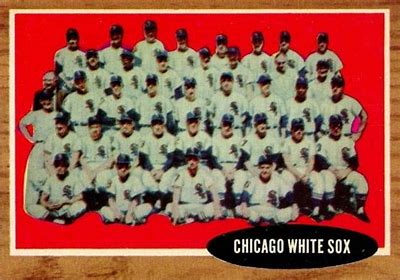Sherm Lollar hit .268 with 26 RBIs in 84 appearances. However, once again, only 2 home runs. He fractured his thumb on June 20th when hit by a pitch from Ted Sadowski on June 20th. He didn’t return to play until July 25th. The Sox were sadly powerless, with just 92 as a team. Floyd Robinson only had 11 in the clean-up spot, while Al Smith hit 16 and Jim Landis 15. There was little “Go-Go” left.
At the end of the 1962 season, there was little fascination over Sherman Lollar, and articles about him had all but disappeared. The thumb was still bothering him and his confidence waning. There was only Yogi Berra yet to fuss over in the 59th edition of the World Series that was delayed a day to allow the three-game playoff between the Giants and Dodgers to determine the National League pennant. Another day of rest for the Yankees. Sherm was probably off cleaning his rifle, while contemplating retirement. His body was telling him on last year!
The tie-breaker series was necessary once both teams finished the season with identical win–loss records of 101–61. The Dodgers won a coin flip late in the season, which gave them home field advantage. The Giants had won their first NL pennant since 1954 and first since moving from New York in 1958. This World Series, which was closely matched in every aspect, is also remembered for its then-record length of 13 days, caused by rainouts in both cities. Also, never before had two teams traveled so far to play each other for the Championship.
Yogi Berra had found a way to once again be a key player in the New York Yankees’ 1962 World Series victory over the San Francisco Giants. He had lost his starting position to Elston Howard in 1960, and only got into 86 games, similar to Lollar’s playing time that year. In Game 2, Berra came in as a last-minute replacement for Elson, who was unable to play. Yogi batted twice and drew a walk each time, although the Giants won 2-0 on Willie McCovey’s home run at Candlestick Park to tie the series at 1-1.
Whitey Ford had won Game 1 for the Yankees but would lose 5-2 in Game 6 while Roger Maris homered. The only run in Game 7 came in the fifth inning when Tony Kubek grounded into a double play. There was drama in the bottom of the ninth when pinch-hitter, Matty Alou led off with a bunt hit. He would have been out if not for a dropped foul ball. After the next two batters struck out, Willie Mays hit a double into the right-field corner, but Maris played it smartly and held Alou at third. McCovey hit a bullet to Bobby Richardson who held on for the final out. Ralph Terry grabbed the victory and the MVP Award.
The 1963 stage was now set for the final playing season of two great catchers, Yogi Berra and Sherm Lollar. Both would go on to manage in the future, but Berra had one more ring to claim, and Lollar still had something to prove. By mid-January, Luis Aparicio and Al Smith were traded to the Baltimore Orioles for Hoyt Wilhelm, Ron Hansen, Dave Nicholson, and Pete Ward. That left only teammates Jim Landis and Nellie Fox from the 1959 team on the White Sox roster.
My first mitt purchase was endorsed by Jim Landis, since I was primarily relegated to right field, where I could do less damage, when I first played Little League ball. A Sherm Lollar catcher’s mitt wouldn’t have done me much good. I used that glove for many years, after it gathered dust, before I got involved in media league softball. It was obviously too big for me when first used, but I grew into it, playing catch with my dad and the neighbor kids.
A new, bigger mitt was probably a factor in Sherm’s final season, with the acquisition of knuckleballer Wilhelm, known as “Old Sarge,” although J.C. Martin would take over the starting role and Ray Herbert would take the mound on opening day.

Leave a Reply